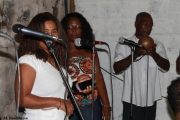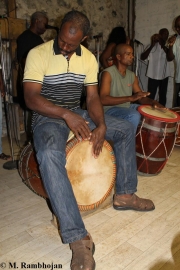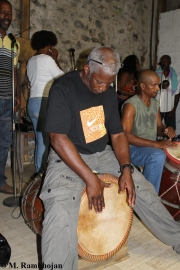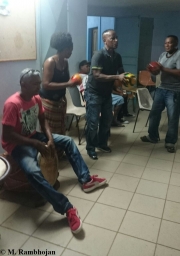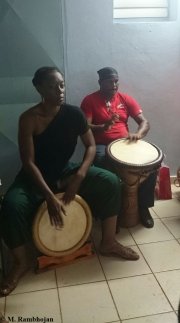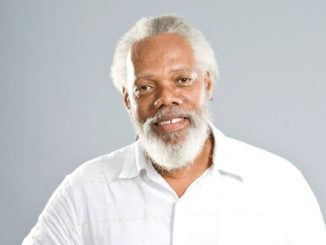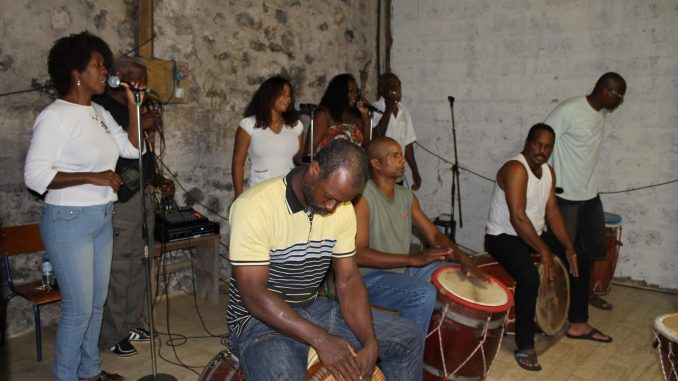
Gwoka is born from the meeting of slaves from different African tribes. When they arrived in the Caribbean, they did not speak the same language, they did not have the same customs but they all knew music. Under the sunshine of Guadeloupe, African languages mixed with the languages spoken by the European settlers and Amerindian words. The “dug wood”, the drum that the African made on its continent with a trunk that he covered with an animal skin, was first abandoned for the barrel which transported, for example, wine, oil or salted meats because it was forbidden to the slave to cut a tree. The “Ka” was born. Finally, the percussion instrument was called “Ka” and music, dance and song took the name of “Gwoka” (big ka, in English). In order to find the origin of this word “Ka”, some researchers studied the history of India, Egypt, Central Africa and other Caribbean islands then, they agreed to say it comes from Africa.
Today, the“Ka” is not made anymore with barrels but with wooden planks, a precision work…
It’s during a “Léwòz”, the “Ka” (with “Chacha” or maracas and “Ti-Bwa” or two sticks beating a bamboo piece) is on stage. There are two “Boula” or two “Ka” on which two “Tambouyé” (ka-drum players) beat regular rhythms and a “Mawkè” or a player who accompanies the singer and the dancer by giving free rein to improvisation.
There are seven official rhythms in Gwoka music : “woulé” ; “kaladja” ;“graj” ; “toumblack” ;“léwòz indèstwa” ; “short menndé ;“granjanbèl”. However, there are other called “léwòz de Jabrun”, “padjanbèl”,“long menndé”,“sobo”, “mayolè”, “grap a Kongo” or “takout”.
There are two kinds of singers : the soloist is the lead singer who sings the verses and improvises ; the choirs (known as “répondè”) who sing choruses and clap their hands. The majority of soloists are men, but in recent years, women also sing. Previously, a woman who sang gwoka was regarded as a woman of disrepute.

